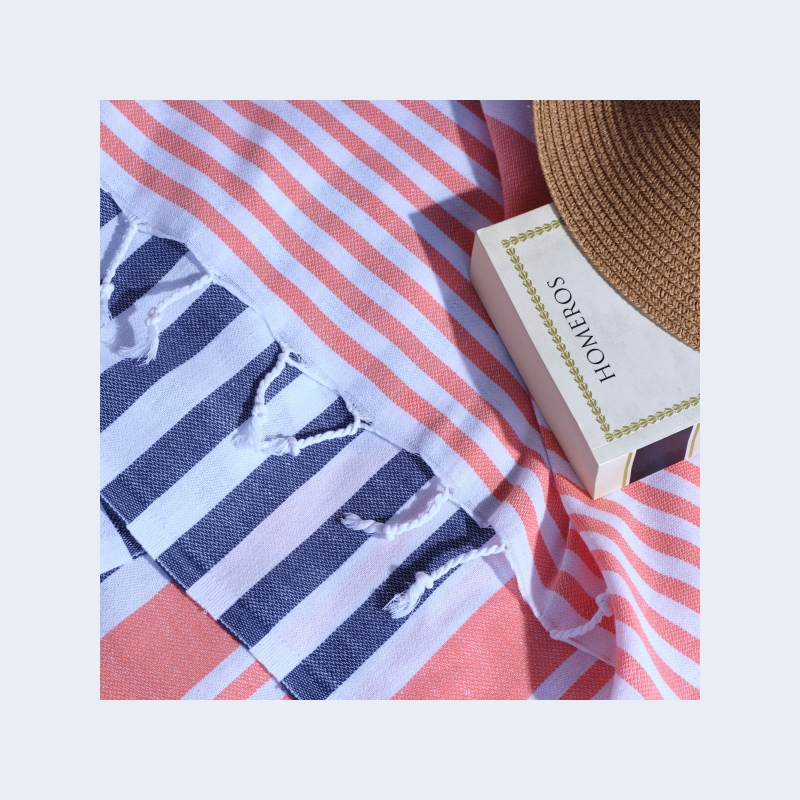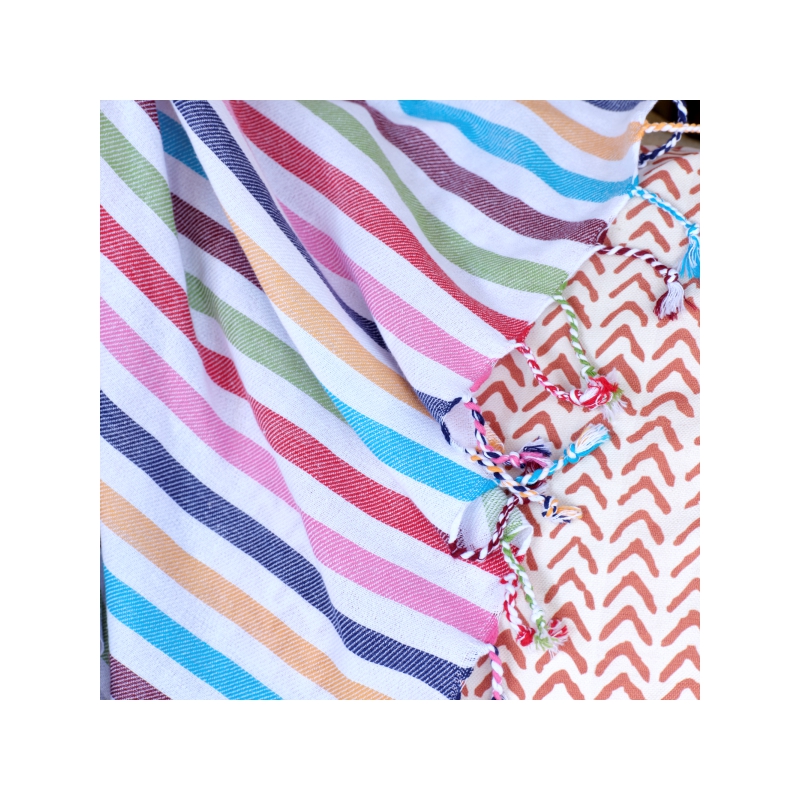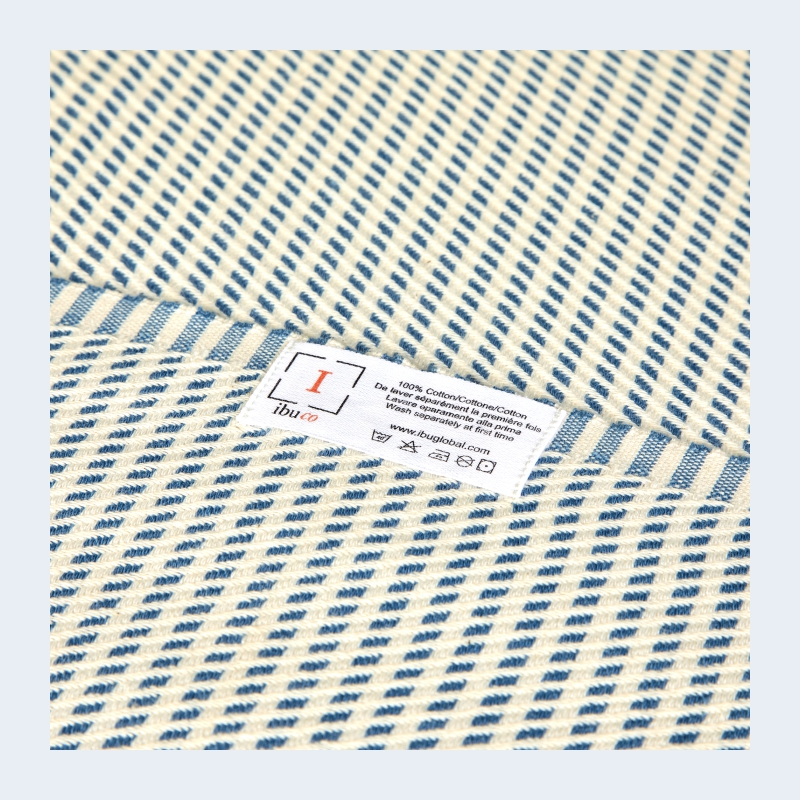Peshtemal
Peshtemal is a woven cloth that used to cover the body , or wrapped from the waist to prevent contamination of clothes while working.
A peshtemal or long (also spelled peshtamal, pestamal or pestemal; from Persian~ Fa pustmal پشت مال back towel § Fa pust پشت back + Fa mal مال cleaning) is a traditional towel used in baths. A staple of Persian and Ottoman hammam culture, dating back hundreds of years, the pestemal was originally designed to help individual bathers maintain their privacy. In addition to being highly absorbent, pestemals dry faster than thicker towels. It is also used to indicate which region people are from. There are many kinds of peshtemal, with different styles and colors in different areas of Turkey and Iran. The peshtemal absorbs water as fast as a terry cloth towel, dries more quickly, takes up less space, is easy to carry and is therefore used as an alternative in bathrooms, pools, spas, beaches, sports facilities, and for baby care. The peshtemal fabric is made of 100% cotton produced on manually operated looms in modern Turkey, historically in Antioch.
On the other hand, there are Fouta with similar uses and structure of peshtemal from the south of the Mediterranean. The fouta (also spelled futa) is a piece of thin patterned cotton or linen fabric of Tunisian origin used in many Mediterranean countries and Yemen.Among other uses, they were worn, by both men and women, wrapped around the body while at the public baths in 19th-century Syria.In Algeria, conservative women wore the fouta draped over their sarouel garment.Similarly, in some parts of southern Saudi Arabia, men would wear the fouta as a loincloth beneath their thawb robes, or just by itself while relaxing at home.Foutas are widely used today in the occidental world as Turkish bath towels (hammam towels) or even beach towels.




